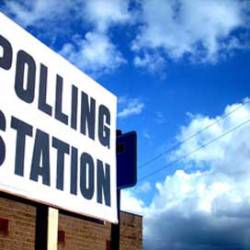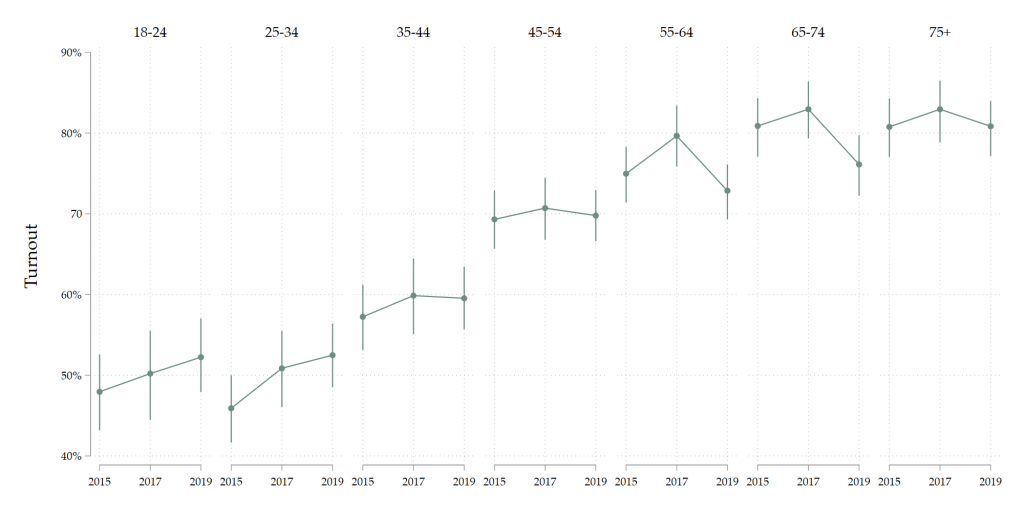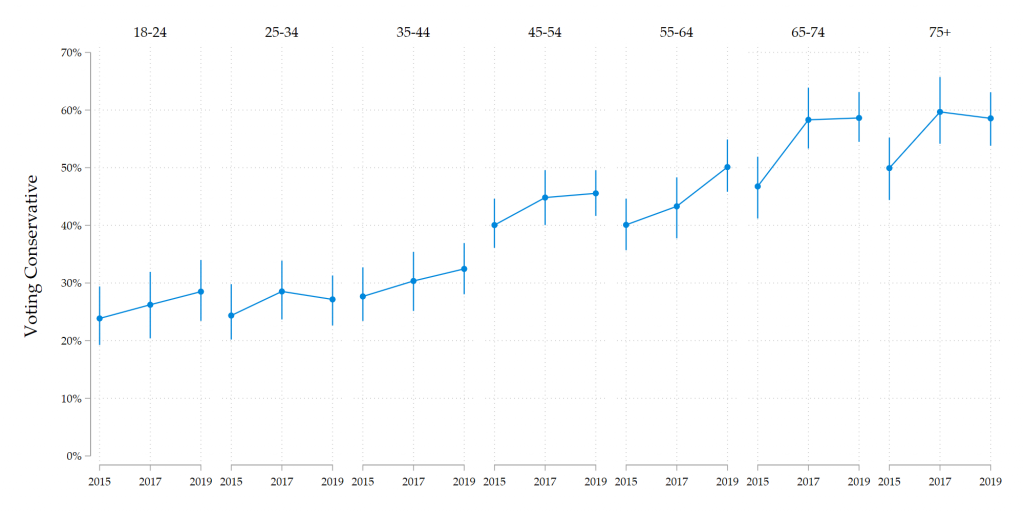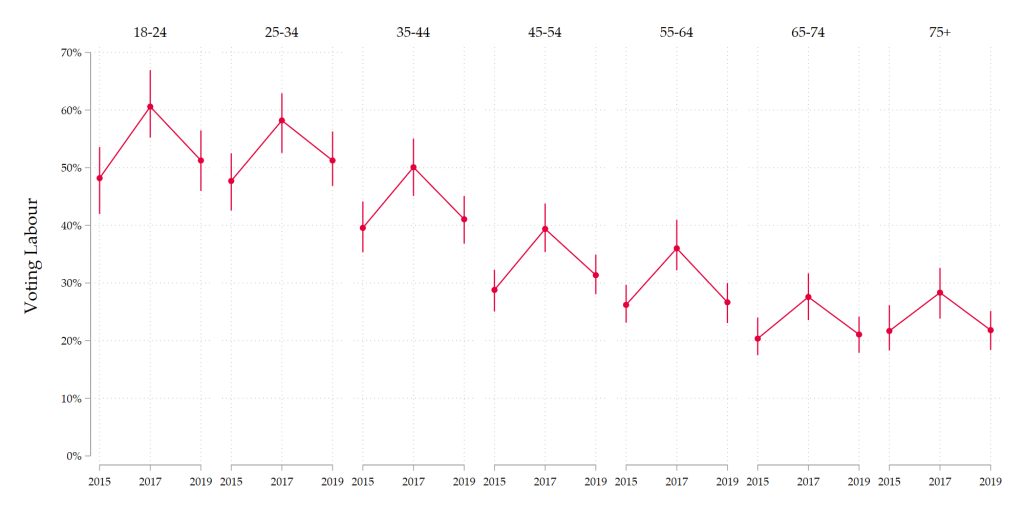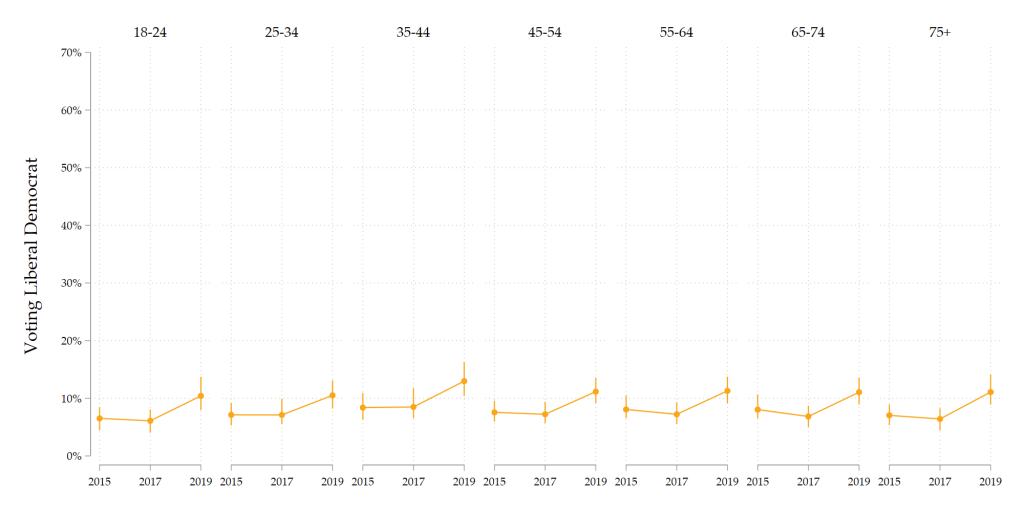Recent British elections have seen much discussion about the relationship between age and voting behaviour. British politics seems increasingly polarised along age lines, with younger voters being more likely to support the Labour party and older voters more likely to support the Conservatives. This pattern was intensified by the fallout from Brexit. Support for leaving the European Union was sharply divided along age lines, and as , the age cleavage in British voting behaviour intensified.
The release of the 2019 British Election Study (BES) Post-Election Random Probability Survey enables us to shed further light on how the age cleavage continued to evolve in 2019.
Turnout
Turnout is with surveys, but random probability survey data represents our best chance of estimating how likely people of different ages were to cast their votes in elections. These surveys, by design, include more people who don’t vote in elections, although over-reporting of turnout still takes place in all surveys (for this reason, we will also conduct a ‘vote validation’ exercise, and so our findings are preliminary at this point).
In the figure below we adapt the hierarchical Bayesian approach we developed in order to examine reported turnout patterns by age groups in the 2015, 2017 and 2019 elections.
Broadly speaking, the age-turnout relationship looks fairly stable across these elections: younger people are less likely to to vote than older people, and turnout rises as people get older. There are some modest changes between elections. Turnout amongst the youngest age groups is trending upwards slightly (although these changes are within the statistical error margin), whilst amongst those aged 55-74 turnout dipped slightly in 2019 – perhaps indicating that some older voters were put off by the winter election.
We need to interpret these changes cautiously for two reasons. First, there is considerable uncertainty around the turnout estimates for each election (represented by the vertical bars emanating from each point). The data is consistent with a wide range of underlying patterns of behaviour. For example, whilst the central estimate suggests that turnout amongst 18 to 24 years olds was four points higher in 2019 than it was in 2015, the 95% Credible Interval ranges from a small decrease (-1.7) to a substantial increase (10.7). Second, some people are likely to have misreported voting when they did not. In previous years we have been able to get around this problem by ‘validating’ turnout against the marked electoral register. However, because of the coronavirus pandemic we have not yet been able to do this for the 2019 data, though we still hope to be able to do this in future.
Party Support
We can also use the 2019 BES Post-Election Random Probability Survey to examine the relationship between age and vote choice – though again we need to be cautious not to overinterpret small differences between elections when our estimates have uncertainty. Nevertheless, some patterns emerge from the data fairly clearly.
Between 2015 and 2017 the Conservative party increased its share of the vote by about five percentage points, adding a further point in 2019. In the graph below we can see that the bulk of that extra support in 2017 was from the two oldest age groups, who maintained their support in 2019.
The overall changes in Labour’s electoral fortunes were more dramatic. From 2015 to 2017 Labour added about ten points to its overall vote share before dropping eight points again in 2019. In the graph below we can see that this rise and fall occurred in all the age groups, but the changes are more dramatic amongst younger voters.
In 2015 and 2017, the Liberal Democrats languished on around eight percent of the vote, before increasing their vote by 50% to 12 points in 2019. As the figure below shows, our data suggests that this increase happened relatively evenly across age groups.
Overall, the relationship between age and vote choice in 2019 is partly one of continuity – older people were much more likely to vote Conservative and younger people were much more likely to vote Labour – and partly one of common trends – where the level of support changed, as it did for Labour and the Liberal Democrats, it did so in similar ways across age groups. The exact relationship between age and voting behaviour has fluctuated over the last three elections, but in 2015, 2017, and again in 2019, age was one of the most important predictors of how people voted.

